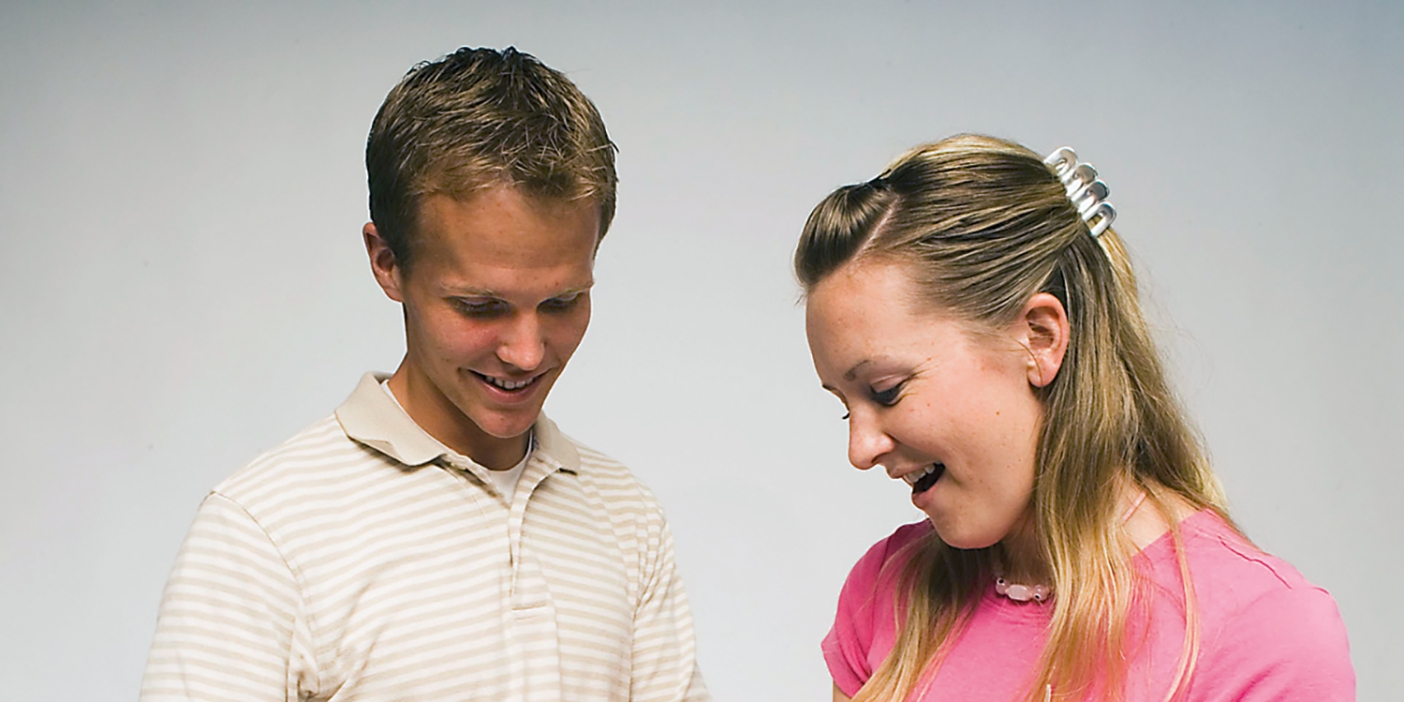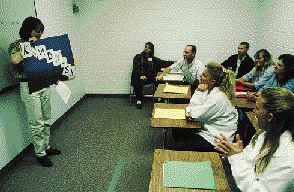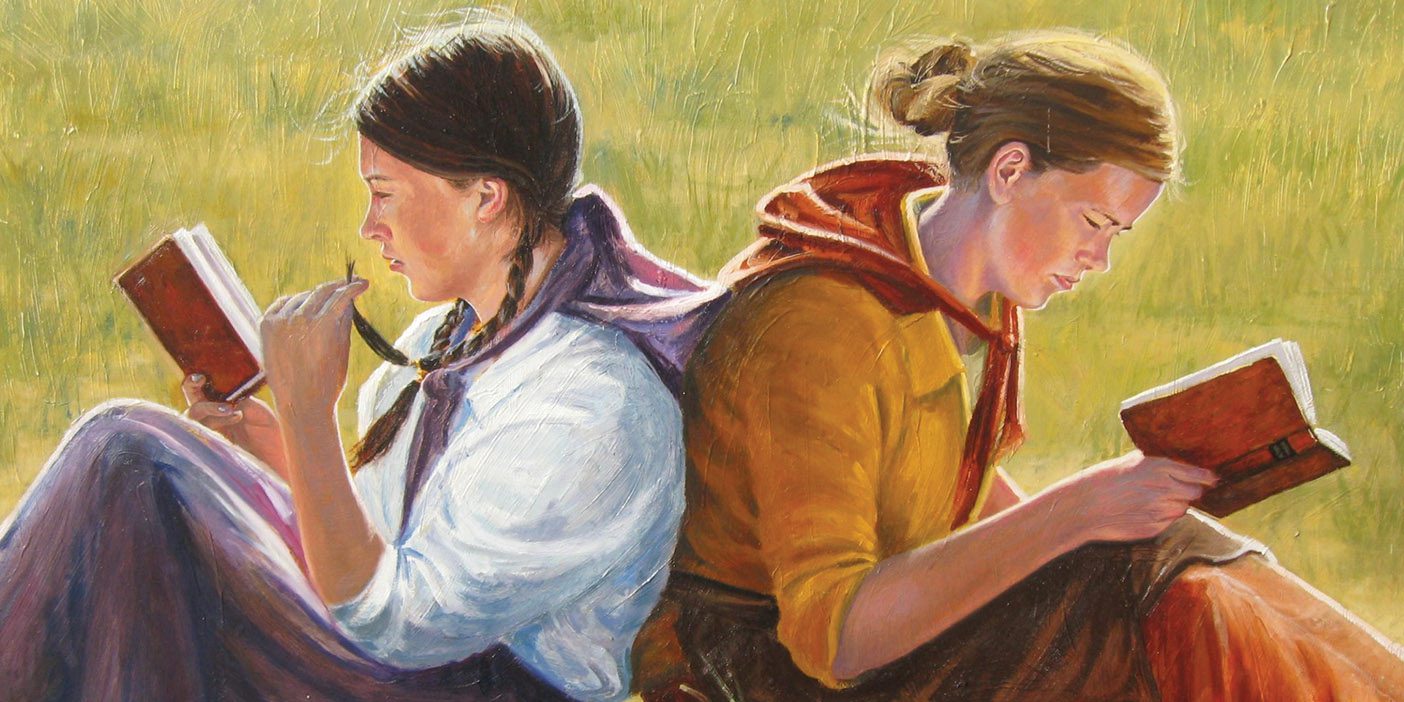Exactly three years ago I was called to be a counselor in the Provo Oak Hills Stake Relief Society presidency. I did not know which counselor I was until I was asked to sit on the stand at stake conference. The president, Deanne Francis, handed me a stack of manuals; the top one was light blue with a title in bold black letters: Creative Homemaking for Happy Living. I gasped and turned to Deanne. “I’m the homemaking counselor?” I asked.
She smiled what I now think of as an “oily” smile and whispered, “I know you’re a grasshopper, but you’ll do just fine.”
After the meeting, I met Tom, my husband, at the back of the chapel. “I’m the homemaking counselor,” I told him.
He put his arm around my shoulder. “Don’t worry,” he said. “I’ll loan you some of my recipes.”
When my four sons heard, they responded in panicked unison: “This doesn’t mean you’re going to start cooking again, does it?”
Later that afternoon, Tom and I went for a walk around our neighborhood. As we turned a corner, we met a group of neighbors, the bishop among them. When they saw me they burst into guffaws. “I never thought I’d see the day when Louise Plummer would be the homemaking counselor,” the bishop said. “What are you going to do?” Snicker, snicker, snicker.
“Well,” I said, “first I’m going to make a baby quilt, and then I’m going to have a baby! Come on Tom, let’s go home and make a baby.”
The next day I browsed through the Relief Society handbook and manuals. I browsed through Creative Homemaking for Happy Living. It is divided into four sections; one is “Food Preparation and Storage,” in which I learned that it’s never too late to learn to cook. I read through the section on “Home Management and Beautification” and learned how to keep my house plants healthy. I read through a section called “Varied Interests” which gives instructions on how to build a manger from bread-dough clay. I did not, you’ll be glad to know, find any instructions for making those glass grapes our mothers were so fond of.
Where my self-esteem really took a dive was the section on sewing and stitchery, called “Homespun is Home Fun.” While I feel little guilt over disliking cooking—“Let them eat Ho Ho’s” is my motto—and while I have not made mangers from bread-dough clay, I have made red glazed hearts to hang on my Christmas tree from a no-cook cornstarch-and-salt recipe, which I will be happy to share with you if you’ll each send me a dollar and a self-addressed, stamped envelope, care of the English Department at BYU. And while I have learned from experience that some neglect and a yearly shower of Malathion is healthy for plants—it is overwatering them that rots them—I have never come to terms with my unwillingness to sew because buried deep, deep in my soul is the belief that I should know how to sew.
So I tried to recommit myself to the idea of sewing after I was called to be the homemaking counselor. I made a sample quilt of 12 red schoolhouse squares, completely sewn by hand because I have an adversarial relationship with my sewing machine. I quilted it free-style without a quilting hoop or frame. It is a crooked, lumpy little quilt—not a quilt to be shared with real quilters—and so it hangs above my sofa in my writing cottage in Manti, where no one but me can see it, and there it gives me a lot of private satisfaction.
I have recommitted myself to the art of sewing even more recently. Two weeks ago, I decided that I would wear a dress that I had sewn to this conference, and this is it: a semi-fitted, slightly tapered dress, mid-knee, has shoulder pads, princess seams, back zipper and hemline slit, self-lined above elbow sleeves, black linen with white contrast front and back. Very easy, very vogue.
The project was as risky for me as bungee jumping and just as exhilarating. I have not had a good night’s sleep since I made the decision. For the last two days I have had a migraine headache complete with vomiting. This dress is why. In 8th grade, I was required to take sewing for one semester. All the sewing was done at school. We had two projects to complete: one apron and one gathered skirt. I got a D in the class. A D! I don’t know what I did wrong with the apron, but I know I sewed the buttonhole on the wrong flap of the skirt, so it buttoned from back to front instead of from front to back.
I didn’t sew again until I was married and felt like sewing my own clothes would save us money. It seldom did, because I bought nice fabrics, and if it wasn’t exactly right, I wouldn’t wear it. It was seldom right. Finally, in the early ’70s, Tom begged me to stop sewing. “We buy everything twice,” he told me. “First you sew a skirt; then you discard it because you hate it, and then you go buy a skirt. Why not just pay for one skirt?” He was right, of course.
So why this continuing obsession with sewing when I am so obviously not suited for it? Because I also have a rich history with sewing that binds me to my mother. Up until the time I got married, my mother sewed all of my clothes. In fact, my earliest memory is of my mother sewing me a lamb costume for the church Christmas play. I stood by her side looking up at her left hand as it pressed the white flannel under the needle, while her right hand pushed the wooden knob of the sewing machine wheel around.
Later we rode the bus to the Yardstick in downtown Salt Lake and chose from their selection of Bates cotton. Then we walked through Woolworths to J.C. Penney where she would buy a small bag of cashews, which we shared on the bus ride home. She sewed me plaid dresses with white collars. She sewed me a pink taffeta gown for my aunt’s wedding. She sewed me wool peg skirts in junior high. She sewed me a black velvet skirt with a brocade white top for the junior prom at the University of Utah. My husband still remembers that dress with affection.
My mother loved me; she sewed for me. It was one of her ways of nurturing me. Did I appreciate this wealth, this embarrassment of riches of having well-made clothes while I was growing up? Did I say thank you?
I thanked her last Saturday night when in desperation I called her on the phone and said, “If you have ever been my mother, if you have ever loved me, you will help me!”
“What is it?” she asked.
“You have to sew in the sleeves to this dress that I’m making for Women’s Conference. Please, please, please.”
What did she do? She burst into laughter. I didn’t care, because in the end she said yes. So I drove up Sunday and she put in these sleeves while I sat by her side and watched. My mother loves me. She sews for me.
Will I wear this dress again? I don’t know. I can feel it puckering even as I speak. I have gained a little weight, and I feel like an aging Porky Pig disguised as Pepé Le Pew. Even my 12-year-old son said, “Mom, you look like a skunk.”
Will I ever sew again? Probably. Two of my sons have requested that I make them shorts, even though they must have been aware over the last two weeks of my unpicking seams with a paring knife and swearing not so softly under my breath. They want me to spend time on them, to know that I love them.
I don’t need to sew again for Relief Society though. That is the one thing I’ve learned as the homemaking counselor. The program is varied. In our stake there are women tying quilts for community shelters and for the Deseret Industries at homemaking meeting. They are reading books together, listening to lectures about politics, art, and music together. We write in our journals together and next week in our ward, several of us are going to read poems about spring together. I have a place in this program. I don’t have to know how to sew to belong.
When I first conceived of this talk, I wanted to end it by telling you that there had been a rumor in the Church that Patty Perfect did not exist, but that I had looked in the mirror and in my reflection I had seen a nearly perfect Patty, because I had sewn a dress.
Well, I did look in the mirror, but what I saw was a woman dressed like a skunk, a woman who struggles to be perfect in all things, but who can only get it together with a few things. I will have to learn to sew perfectly in the hereafter. Through grace. I’ll pick a simple pattern. Very easy, very vogue.
Louise Plummer, a member of the BYU English Department faculty, delivered this address as part of a Women’s Conference fireside in the Marriott Center, May 7, 1992. It was reprinted in the July 1992 issue of BYU Today, a predecessor to BYU Magazine.









